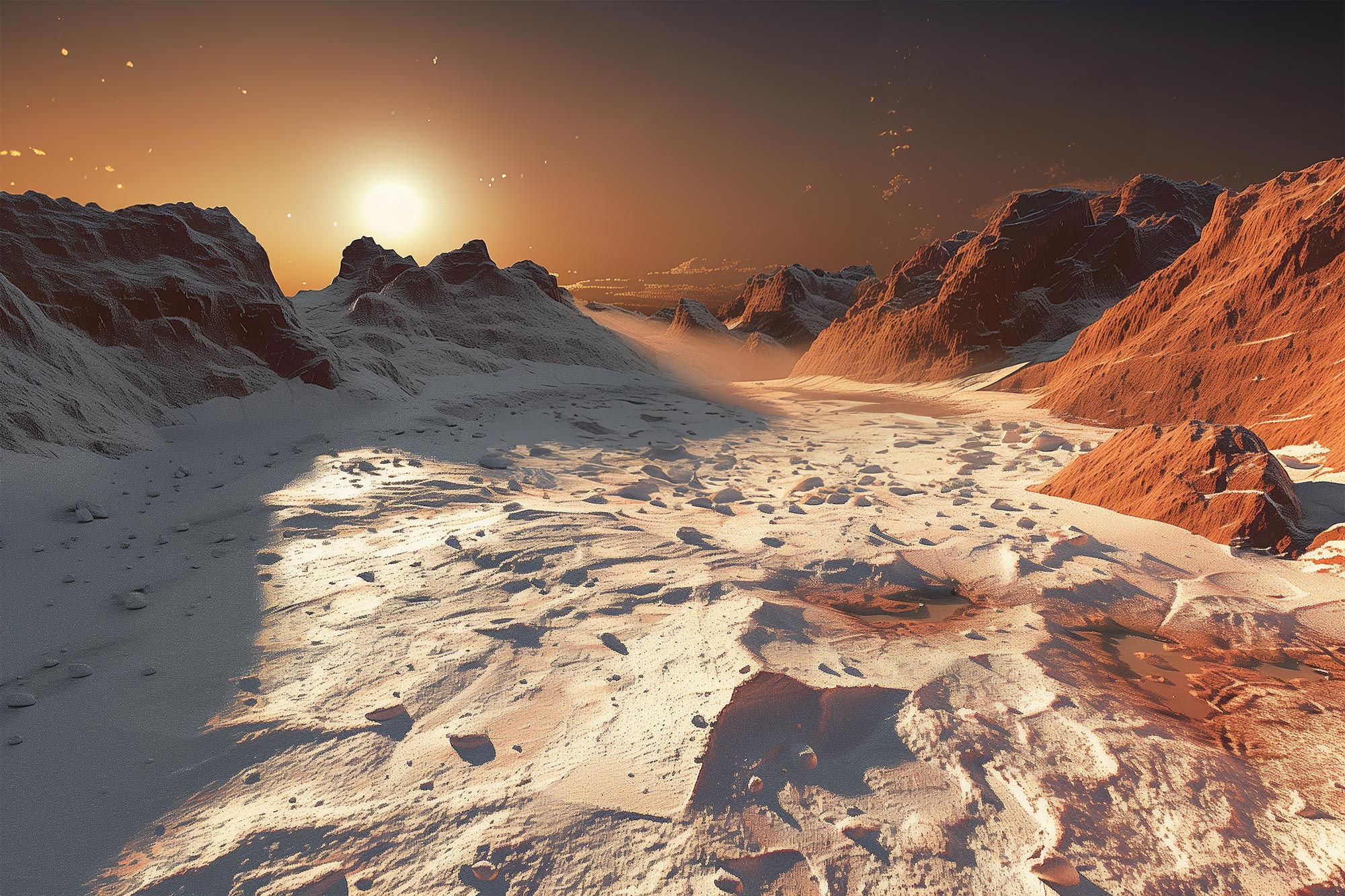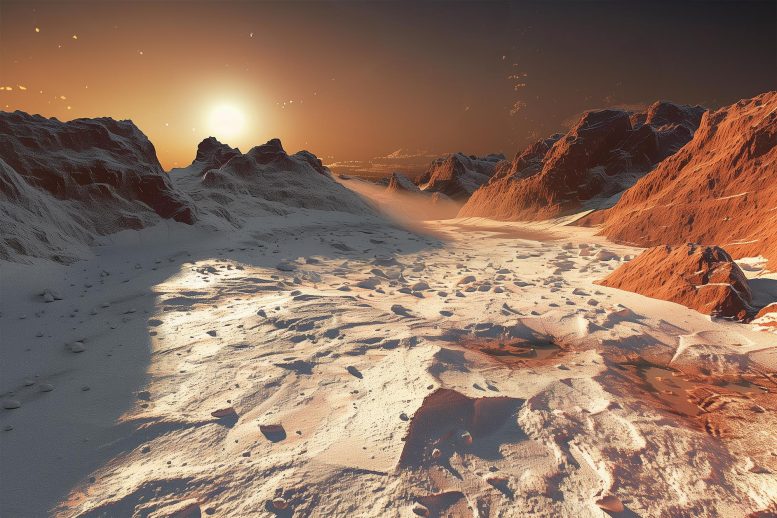

Research highlights the potential for photosynthetic life beneath the surface of Mars, particularly in the mid-latitudes where dusty ice could provide both protection from ultraviolet radiation and the necessary conditions for subsurface water.
This study suggests prioritizing these areas in future explorations for life on Mars, emphasizing the balance between ice dust content and light penetration needed to sustain life.
Martian Ice and Potential Life
Dusty ice found on the surface of Mars might create suitable conditions for photosynthetic life, a recent study suggests. Published today (October 17) in the journal Communications Earth & Environment, the research indicates that ice deposits in Mars’ mid-latitudes are vital areas to consider in the search for life on the planet.
The intense ultraviolet radiation from the Sun currently makes life on Mars’ surface highly unlikely. However, a thick enough layer of ice could shield underlying cells from this radiation. For life to thrive in these icy conditions, it must reside within what’s called a radiative habitable zone—deep enough to avoid the harmful radiation yet shallow enough to absorb the visible light necessary for photosynthesis.
Research on Martian Ice Habitability
Aditya Khuller and colleagues calculated whether such a radiative habitable zone could exist in ice with the dust content level and structure of the ice observed on Mars. They found that very dusty ice would block too much sunlight, but that in ice containing 0.01–0.1% dust, a habitable region could potentially exist at depths between 5 and 38 centimeters (depending on the size and purity of the ice crystals). In cleaner ice, a larger habitable zone could exist between 2.15 and 3.10 meters deep.
According to the researchers, dust particles within the ice could cause occasional localized melting at depths of up to approximately 1.5 meters, providing the liquid water necessary for any photosynthetic life to survive. They suggest that the polar regions on Mars would be too cold for this process, but that subsurface melting could occur in mid-latitude areas (between approximately 30 and 50 degrees latitude).
Implications for Future Mars Missions
The authors caution that the potential existence of theoretically habitable zones does not mean that photosynthetic life is, or has ever been, present on Mars. However, it does suggest that the few instances of exposed ice in the Martian mid-latitudes could be key areas for future searches for life to focus on.
Reference: “Potential for photosynthesis on Mars within snow and ice” 17 October 2024, Communications Earth & Environment.
DOI: 10.1038/s43247-024-01730-y